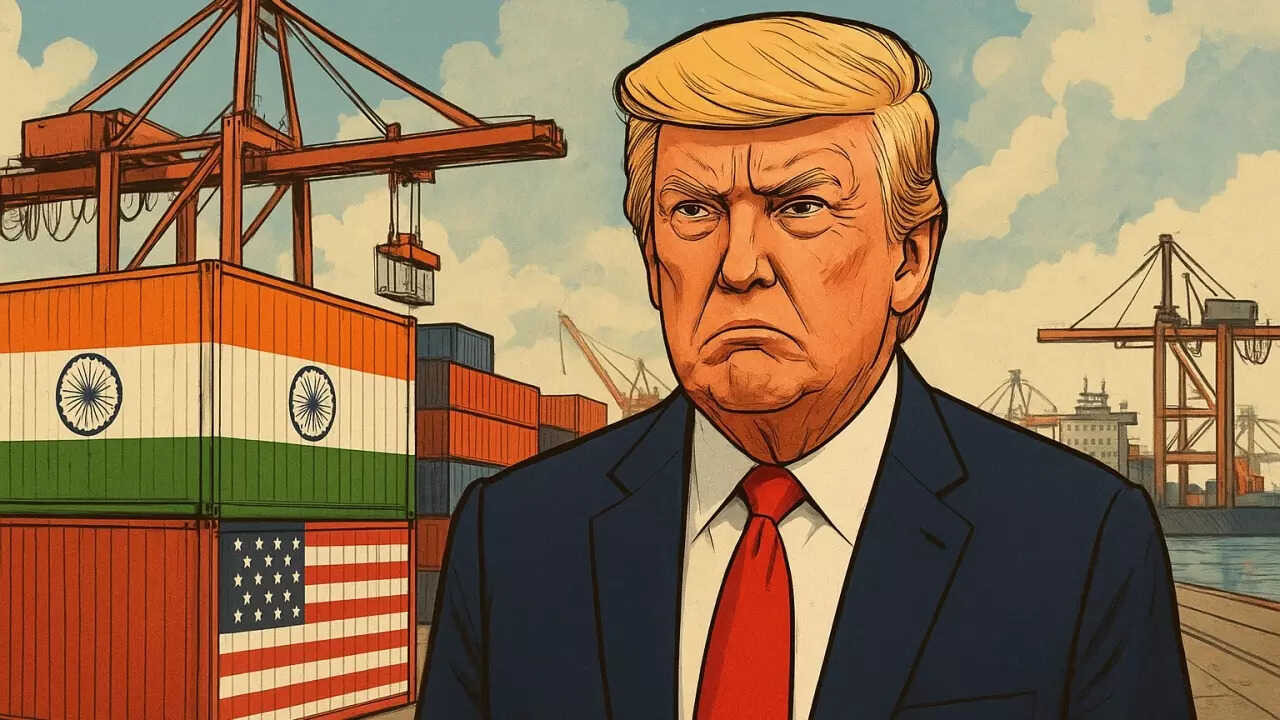The US has imposed 50% tariffs on Indian exports, effective August 27, 2025, which may significantly impact MSMEs. Gems and jewellery, textiles, seafood, chemicals, and auto components sectors will be most affected.
Navigating the Trump Tariff Storm: What It Means for Indian Exports
Donald Trump’s potential return to the White House has trade experts buzzing, and for good reason. His “America First” policy, especially the threat of increased tariffs, casts a long shadow over global trade, particularly for nations like India that rely heavily on exports to the US. So, what could a second Trump term mean for Indian businesses shipping goods stateside? Let’s break down the potential impacts and which sectors might feel the squeeze the most.
The Specter of Higher Tariffs: A Closer Look
Trump’s previous administration wasn’t shy about using tariffs as a negotiating tool, and he’s already signaled a willingness to ramp them up even further if re-elected. The prospect of a blanket tariff on all imports, potentially as high as 10% or more, is sending shivers down the spines of exporters worldwide. For India, which relies on the US as a major export destination, this could translate to significantly higher costs for Indian goods entering the American market.
This isn’t just about a few products becoming slightly more expensive. Broad-based tariffs can disrupt established supply chains, making Indian goods less competitive compared to domestic US products or goods from countries exempt from the tariffs. Imagine Indian manufacturers suddenly having to factor in a 10% or 20% surcharge just to get their products on American shelves. It could drastically alter the landscape of international trade.
Which Indian Sectors Are Most Vulnerable?
While broad tariffs would affect many industries, some sectors are particularly exposed. These are the areas where Indian businesses need to be especially vigilant and proactive in preparing for potential disruptions.
* Engineering Goods: This sector is a major contributor to India’s export basket. From machinery to automotive components, engineering products face significant competition in the US market. Increased tariffs could make it harder for Indian firms to compete with established American players.
* Chemicals: India’s chemical industry has seen considerable growth in exports to the US. However, this sector is sensitive to price fluctuations. Higher tariffs could erode profit margins and potentially lead to a decline in exports.
* Pharmaceuticals: While pharmaceuticals are often considered essential goods, they are not entirely immune to tariff pressures. Indian generic drug manufacturers, which play a crucial role in supplying affordable medicines to the US market, could face challenges. 
* Textiles: The textile industry, already facing stiff competition from other Asian exporters, could be further disadvantaged by higher tariffs. This could impact employment and investment in India’s textile manufacturing hubs.
* Agricultural Products: Certain agricultural products, like spices and processed foods, could also be affected. While the impact might be less severe than in other sectors, it could still impact farmers and exporters.
Beyond the Direct Impact: Ripple Effects
The impact of Trump’s tariffs extends beyond the immediate cost increases. Uncertainty surrounding trade policy can discourage investment, both domestic and foreign. Businesses might hesitate to expand operations or enter new markets if they fear that trade barriers could suddenly be erected. This can stifle economic growth and hinder India’s efforts to become a major global manufacturing hub.
Furthermore, retaliatory tariffs are a real possibility. If the US imposes tariffs on Indian goods, India might respond with its own tariffs on American products. This tit-for-tat approach can escalate into a full-blown trade war, harming businesses and consumers on both sides.
What Can India Do to Mitigate the Risks?
While the future remains uncertain, there are proactive steps India can take to mitigate the potential damage from higher US tariffs.
* Diversify Export Markets: Reducing reliance on the US market is crucial. Exploring new markets in Asia, Africa, and Latin America can help cushion the blow if US demand weakens. This aligns well with existing government initiatives aimed at promoting exports to diverse regions. Consider reading about [recent developments in India’s trade agreements](internal-link-to-relevant-article).
* Enhance Competitiveness: Focusing on improving product quality, reducing production costs, and investing in innovation can make Indian goods more competitive, even with tariffs in place. This requires a concerted effort from both the government and private sector.
* Engage in Dialogue: Maintaining open channels of communication with the US government and industry stakeholders is essential. Advocating for fair trade practices and highlighting the mutually beneficial aspects of the US-India trade relationship can help shape policy decisions.
* Explore Alternative Trade Agreements: Investigating opportunities for free trade agreements with other countries can provide preferential access to new markets and reduce reliance on the US.
Ultimately, navigating the potential challenges posed by a second Trump term will require a multi-pronged approach. By taking proactive steps to diversify markets, enhance competitiveness, and engage in constructive dialogue, India can better weather the storm and safeguard its economic interests. The key is to anticipate the changes and strategically adapt to the evolving global trade landscape.







